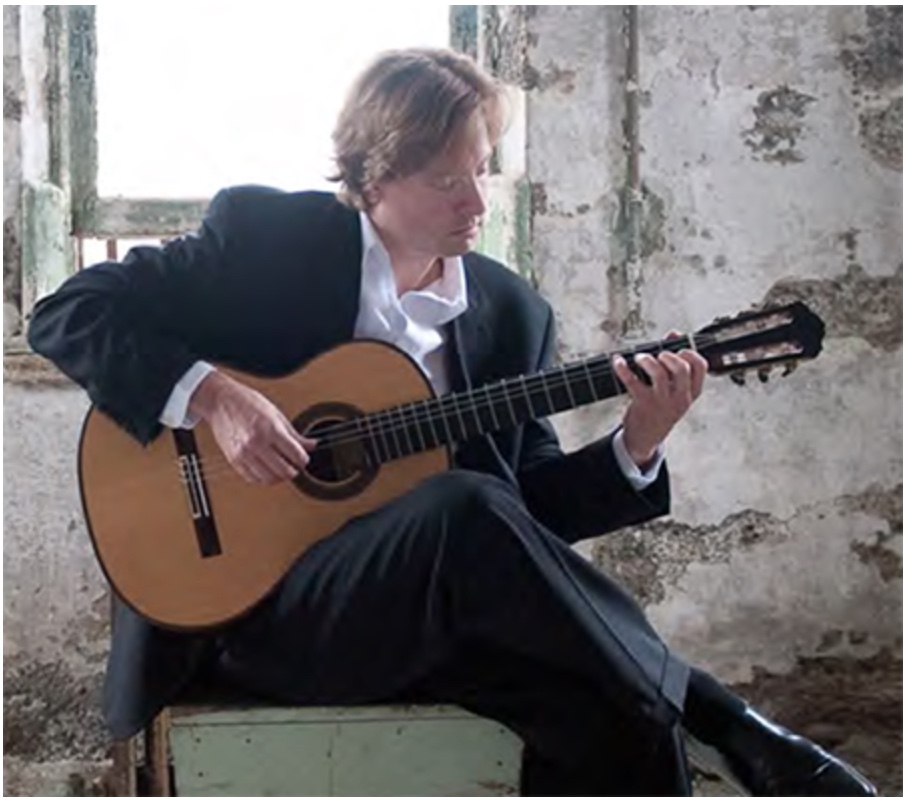by Mike Telin

On Wednesday, June 26 at 7:30 pm in Mixon Hall at the Cleveland Institute of Music, Vieaux will play Luigi Boccherini’s Guitar Quintet No. 4 in D (“Fandango”). The piece is one of the most popular works in the guitar chamber music repertoire and one that he’s recorded with the Escher Quartet.
Why is it so popular? “My guess is that it’s because of the third movement — the famous Fandango that gets played on radio stations around the country. But I think what really brings it over the top is when the cellist plays the castanets. It’s just one of those works that presenters like to program.”
Vieaux estimates that he’s played the piece around 150 times — half of them with the Escher Quartet. “I never really get tired of it. It’s so familiar to me now that I am able to just sit back and enjoy it in a way that can’t really do with less familiar pieces.”
On Friday, June 28 at 7:30 pm at Disciples Church in Cleveland Heights, Vieaux will take on another well-known piece in the guitar chamber music canon, Astor Piazzolla’s Histoire du Tango. Written in 1985, the four-movement work piece chronicles the evolution of the tango: Bordel 1900, Café 1930, Nightclub 1960, and Concert d’aujourd’hui (Modern-Day Concert).
“It’s my understanding that Piazzolla worked on the guitar part with Álvaro Pierri, who had a major career in Europe for many years,” Vieaux said. “The piece is a snapshot of the history of Tango as seen through Piazzolla’s eyes. But the common story told is that many of the public in his home country of Argentina didn’t appreciate his New Tango style quite so much. It was seen as being a little bit too radical or something too outside the norm.”
The guitarist likened the public’s skepticism of the composer’s music to that of Miles Davis’s. “There was a lot of head-scratching about all the musical phases he went through, but those were important developments. And as time goes by, you realize that they played an important role in advancing the artform. But that has happened throughout history — every great composer was essentially a synthesizer of previous styles. Then it becomes something else and those pieces should have a life of their own without categorization.”
On Saturday, June 29 at 7:30 pm at the Maltz Performing Arts Center, Vieaux will close his ChamberFest performances with another work he’s recorded with the Escher, Aaron Jay Kernis’s 100 Greatest Dance Hits.
“I’ve always loved this piece,” Vieaux said. “It’s a fantastic synthesis of classical music writing in terms of form, structure and how it’s organized, but it’s also infused with a kind of early 80s funk. There’s some salsa in one of the movements. Another movement is titled ‘MOR * Easy-Listening Slow Dance Ballad.’ MOR stands for Middle of the Road, which is a radio designation for pop music that is right in the middle of the road — what we call soft rock or something like that. I think that movement is very moving, with a lot of poignancy in it.” The final movement, Dance Party on the Disco Motorboat, is the composer’s nod to the popular music television show Soul Train.
“When we played it at Lincoln Center Aaron would come by and talk about how when I first moved from the Bay Area to New York to study and to compose, it was a bit of a culture shock to him. He talked about being on the subway with kids who would get out buckets and start playing all these beats. And with this piece he wanted to capture things like that — things that are uniquely New York. So there is this rapping and tapping groove thing that we all play.”
Published on ClevelandClassical.com June 25, 2024.
Click here for a printable copy of this article



